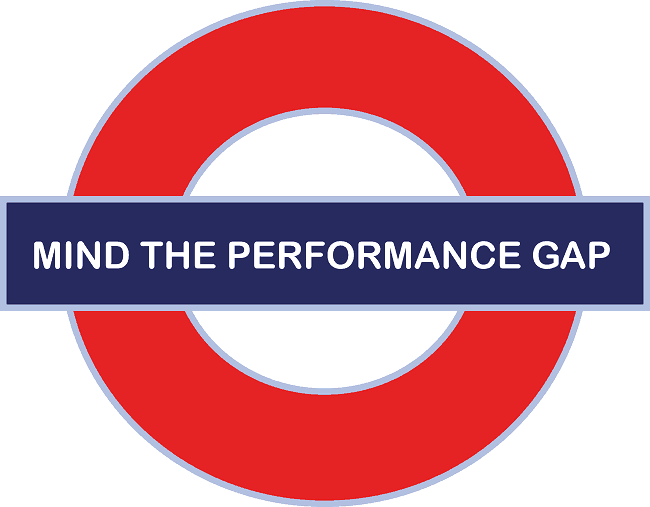Mind the performance gap – performance management failures
The top 12 deadly sins of performance management
All too often, organizations set measures based on financial targets. That’s not a bad thing because they represent what the business needs to accomplish. What is frequently missing are metrics that are aligned with other value creation elements.
Make sure to avoid these deadly sins of performance management:
#1 – Not seeing the value of performance objectives
Why are performance objectives so valuable? Because research shows that:
- Having clear objectives with effective measures improves performance
- Teams who say that they know what was expected of them are found to be both more productive, more profitable and had higher satisfaction ratings than those who didn’t. Performance objectives are the easiest way to help your employees understand what is expected of them
- Employees who say they lack any real commitment to their job give one of the key reasons for that lack of commitment as not knowing what was expected of them.
In short, performance objectives improve performance. The performance of the employee and performance of the business. They also improve employee motivation and job satisfaction.
#2 – Permitting organizational boundaries and concerns to dictate performance metrics
Permitting organizational boundaries and concerns to dictate performance metrics. Example: A company rewarded its employees in the order-entry department based on order accuracy. However, the order-entry folks were taking so much time double- and triple-checking orders that the company was missing its scheduled delivery dates. Guess who didn’t get their bonuses? The delivery department, because it was measured on delivery – which was delayed by the very activity the order department was rewarded for.
#3 – Focusing on a small part of what matters
Companies too often focus on a small part of what matters, rather than on the totality, or end results. In the case of BP, for example, we learned that it was focused on reducing the number of OSHA-recordable accidents, probably because it feared government retribution. What it ignored was ensuring that the oil rig equipment was working properly.
#4 – Use of measures whose sole purpose is to make the organization, its people, and especially its managers look good
Use of measures whose sole purpose is to make the organization, its people, and especially its managers look good. Example: In customer service, comparing the actual shipment date to the latest promise date given the customer, rather than to the customer’s requested shipment date.
#5 – Measuring performance from the companies point of view
This is when a company measures performance from its point of view, rather than the customer’s perspective. Example: Measuring fill rate of individual components, when the customer must receive all the components on the order to have a working system.
#6 – Measuring only a small component of what matters
Measuring only a small component of what matters – Example: Focusing on minimizing transportation cost, when a broader and more meaningful metric is total supply chain cost.
#7 – Not considering the consequences
Many companies create metrics without any consideration for the consequences. Take the example of a fast-food chain that chose to measure waste, based on how many cooked chickens went unsold at the end of the day. So managers responded by not cooking any chicken until orders were placed, thereby turning fast food into slow food.
#8 – Not taking measurement seriously
Not taking measurement seriously – Continually re-debating metric selection, calculation, and targets, rather than leveraging the information to improve performance.
#9 – Not involving employees in identifying and defining performance objectives
The majority of our employees want to be fully involved in identifying and defining their performance objectives. After all, performance objectives describe what good performance looks like for the employee’s job and it’s against those performance objectives that the employee’s actual performance will be monitored, evaluated and, possibly, rated.
#10 – Assuming you know what is important to measure without giving it adequate thought
Assuming you know what is important to measure without giving it adequate thought. Example: A utility company assuming that customers want a service appointment as soon as possible, when what customers really want is for the service rep to consistently show up on time for the appointment.
#11 – Not aligning activities with the overall goals of the organization
Effective performance measurement helps ensures that all organizational activities support the overall mission and business objectives by always linking actual results to plans at all levels of the organization.
#12 – Not monitoring performance against performance objectives
Many managers put an enormous amount of time and effort into agreeing performance objectives with their staff only to have so much of that work undermined by failing to monitor the employee’s actual performance against the objectives.
It’s so important to monitor and measure employee performance against the objectives because it is clear objectives with effective measures that improve performance. Also if leaders don’t monitor employee performance how can they give performance feedback that is accurate, objective and balanced?
Short URL & title:
Top 10+ performance management failures — https://www.torbenrick.eu/t/r/xia
Share it:
If you enjoyed this article, please take 5 seconds to share it on your social network. Thanks!






Thank you for this interesting article. I a am a french new reader of your blog, and I think I will come hear regularly !
I think the first issue you expose in this article is the most important of all. Companies should developp or use tools to improve the visualization of the companies achievements. It has also a lot to do with gamification which could be an interessant topic for management teams.